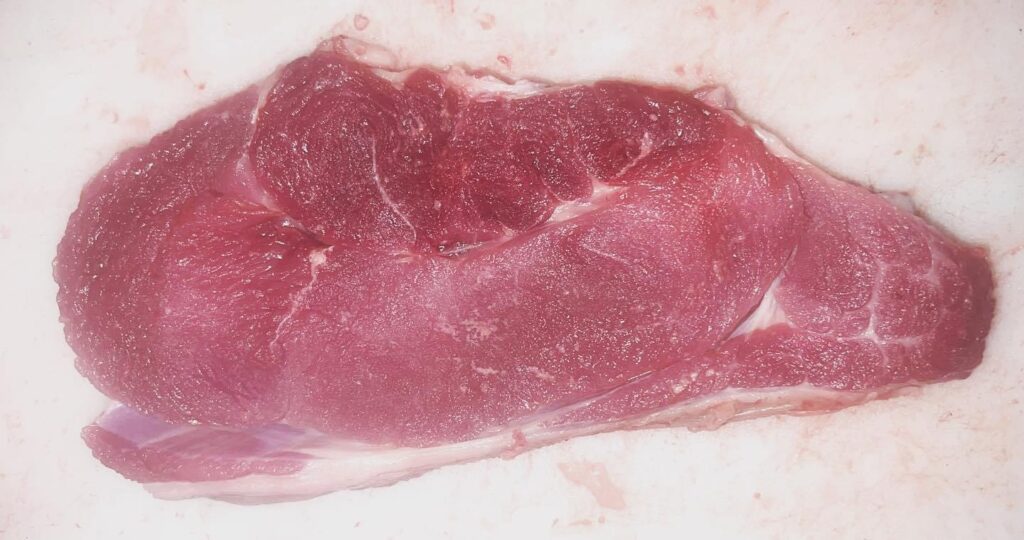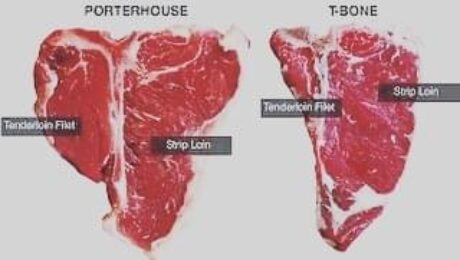Where we talk about cuts of meat and how to cook them.
PORK SIRLOIN

I didn’t realize so few people have experienced a pork sirloin!!

Pork sirloin is tender and full of flavor, but lacking in the fat department, so be careful not to overcook these beauties!
The pork sirloin is located near the tail end of your pork loin (pork chops), with typically just 3 steaks per side. Smaller breeds may have less, but that’s ok- it can also be made into a small roast if there isn’t enough to cut a couple steaks out of! Sirloins and sirloin roasts can be prepared bone-in or boneless. I prefer to cut them boneless, because the bones can be a little wonky.

Preparing them is easy! For steaks, treat it as you would a pork chop. You can easily avoid creating a dry, tough piece of meat by using your meat thermometer

. Safe internal temperature for pork is 145 degrees. Keep in mind, your meat will continue to cook once you remove it from your grill/oven/skillet/magic cooking device/etc. If opting for a sirloin roast, consider wrapping in caul fat for additional deliciousness.

- Published in Meat Cuts
Steak Breakdown:

Pictured is the T-Bone Steak & Porterhouse Steak. Both consist of the NY Strip on one side of the bone (the spine) and the Tenderloin, also known as Filet Mignon when cut, on the other side. The difference between the two is where the cut comes from. The Tenderloin is tapered, so cuts towards the head will result in a smaller portion of the Tenderloin on the steak (T-Bone), and cuts towards the tail will include larger portions of Tenderloin on the steak (Porterhouse).
When you’re filling out a cut sheet, this is why the option is T-Bones & Porterhouses OR NY Strips & Filets.
- Published in Meat Cuts
Caul Fat

Did I butcher an animal for you? Did you receive back a little bag marked “Caul Fat”? Are you as confused as ever? Let me explain!
Caul fat goes by many different names; its technical name is the “greater omentum,” but it can also be referred to as fat netting, mesentery, lace fat, crépine (French), or ragnatela (Italian). While it doesn’t make a great fat for rendering or cooking, like kidney fat (lard) or back fat, it’s perfect for wrapping pâtés, meatloaf, meatballs, sausages, or roasts to keep them moist while they cook.
Caul Fat can withstand high temperatures. During cooking, the caul fat slowly renders out, basting the meat with fat, keeping it from drying out, and adding an extra layer of richness. Despite the fact that it surrounds the digestive organs, caul fat doesn’t have an unpleasant or “organy” flavor at all.
Tell us how you use your Caul Fat!
- Published in Meat Cuts
- 1
- 2






